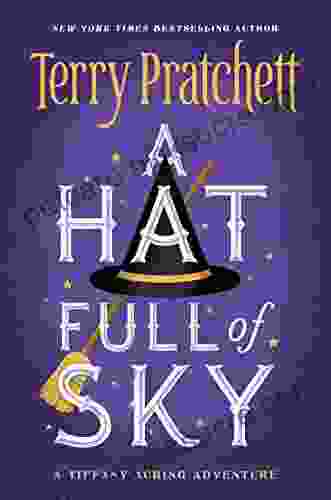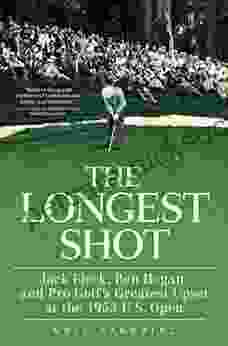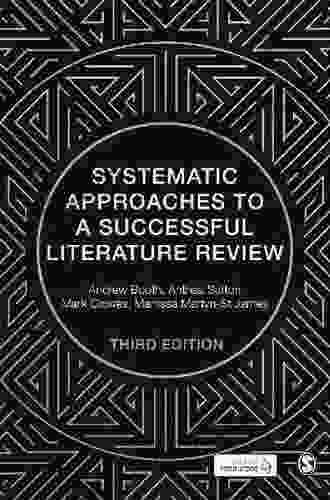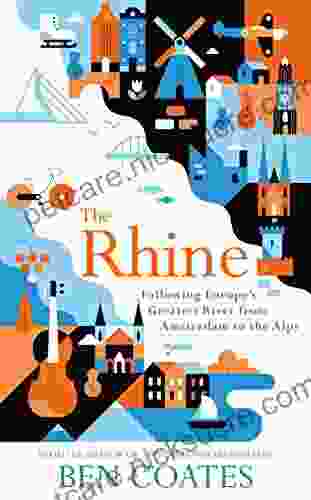Using and Developing Measurement Instruments in Science Education

Measurement instruments play a crucial role in science education, providing a means to collect data, assess student learning, and investigate scientific phenomena. In this comprehensive guide, we will delve into the use and development of measurement instruments specifically tailored to the needs of science education.
Types of Measurement Instruments
There are various types of measurement instruments used in science education, each with its own unique purpose and applications:
4 out of 5
| Language | : | English |
| File size | : | 10625 KB |
| Text-to-Speech | : | Enabled |
| Screen Reader | : | Supported |
| Enhanced typesetting | : | Enabled |
| Word Wise | : | Enabled |
| Print length | : | 396 pages |
- Paper-and-pencil tests: These traditional instruments consist of questions that students answer on paper or in a digital format. They can assess a wide range of knowledge and skills, including conceptual understanding, problem-solving abilities, and scientific reasoning.
- Performance assessments: These instruments require students to demonstrate their skills and knowledge through hands-on tasks, such as conducting experiments, designing investigations, or constructing models. They provide a more authentic and holistic assessment of student learning.
- Observational tools: These instruments involve the systematic observation and recording of student behavior. They can be used to assess students' engagement, participation, scientific practices, and attitudes towards science.
- Technological instruments: These instruments leverage technology to enhance data collection and analysis. They include sensors, data loggers, and computer-based simulations, which can provide real-time data and support interactive learning experiences.
Developing Measurement Instruments
Developing effective measurement instruments requires careful planning and consideration. Here are some key steps involved:
- Define the purpose: Clearly establish the specific learning objectives or research questions that the instrument will address.
- Determine the type of instrument: Choose the most appropriate type of instrument based on the purpose and the intended use.
- Write clear items: Develop test items or observational prompts that are specific, unambiguous, and aligned with the learning objectives.
- Ensure validity and reliability: Conduct pilot testing and use statistical techniques to ensure the instrument's accuracy, consistency, and fairness.
- Provide clear instructions: Provide detailed instructions to students or observers to ensure consistent administration and data collection.
Using Measurement Instruments
Effective use of measurement instruments involves several key considerations:
- Appropriate selection: Choose the most appropriate instrument for the specific purpose and student population.
- Calibration and maintenance: Ensure that instruments are calibrated and maintained according to manufacturer's specifications to ensure accurate readings.
- Valid and reliable administration: Administer the instrument in a consistent and fair manner, following established procedures.
- Data analysis: Analyze the collected data to draw meaningful s about student learning or research findings.
- Interpretation and feedback: Use the results to inform instruction, provide feedback to students, and identify areas for improvement.
Applications in Science Education
Measurement instruments have numerous applications in science education, including:
- Assessment: Measuring student learning outcomes, such as knowledge, skills, and understanding of scientific concepts.
- Research: Investigating scientific phenomena, testing hypotheses, and studying student learning processes.
- Instructional planning: Identifying student needs, developing targeted interventions, and evaluating the effectiveness of instructional strategies.
- Professional development: Supporting teachers in improving their teaching practices and assessing student progress.
Benefits of Measurement Instruments
Measurement instruments offer numerous benefits for science education:
- Objectivity: They provide standardized and objective data, reducing biases and ensuring fairness in assessment.
- Validity and reliability: Well-developed instruments provide valid and reliable data that accurately measures what they are intended to measure.
- Measurable outcomes: They allow for tangible evidence of student learning and progress, which can inform decision-making.
- Research and evaluation: They support scientific inquiry, research, and the evaluation of educational interventions.
- Accountability: They provide data that can be used for accountability purposes, such as monitoring student achievement and evaluating educational systems.
Challenges and Considerations
While measurement instruments are valuable tools, there are some challenges and considerations to keep in mind:
- Time and resources: Developing and administering measurement instruments can be time-consuming and resource-intensive.
- Interpretation: Data from measurement instruments must be interpreted cautiously, taking into account potential biases and limitations.
- Generalizability: The results of measurement instruments may not be generalizable to all students or situations.
- Student anxiety: Some measurement instruments, such as standardized tests, can induce anxiety and stress in students.
- Cultural bias: Measurement instruments should be culturally sensitive and avoid bias against certain groups of students.
Measurement instruments are indispensable tools for science education, providing objective and systematic data for assessing student learning and investigating scientific phenomena. By understanding the types, development, and applications of measurement instruments, educators and researchers can effectively measure student learning outcomes, support inquiry-based learning, and improve science instruction.
As science education continues to evolve, the development and use of innovative measurement instruments will play an increasingly important role in advancing our understanding of student thinking and the effectiveness of educational practices.
4 out of 5
| Language | : | English |
| File size | : | 10625 KB |
| Text-to-Speech | : | Enabled |
| Screen Reader | : | Supported |
| Enhanced typesetting | : | Enabled |
| Word Wise | : | Enabled |
| Print length | : | 396 pages |
Do you want to contribute by writing guest posts on this blog?
Please contact us and send us a resume of previous articles that you have written.
 Fiction
Fiction Non Fiction
Non Fiction Romance
Romance Mystery
Mystery Thriller
Thriller SciFi
SciFi Fantasy
Fantasy Horror
Horror Biography
Biography Selfhelp
Selfhelp Business
Business History
History Classics
Classics Poetry
Poetry Childrens
Childrens Young Adult
Young Adult Educational
Educational Cooking
Cooking Travel
Travel Lifestyle
Lifestyle Spirituality
Spirituality Health
Health Fitness
Fitness Technology
Technology Science
Science Arts
Arts Crafts
Crafts DIY
DIY Gardening
Gardening Petcare
Petcare Dorthe Berntsen
Dorthe Berntsen Sally A Lipsky
Sally A Lipsky Lou Nanne
Lou Nanne Sarah A Reinhard
Sarah A Reinhard Rebecca Solnit
Rebecca Solnit Jacob Cohen
Jacob Cohen Lindsey Bliss
Lindsey Bliss Mary Douglas
Mary Douglas Alice Waters
Alice Waters Robyn Hawkins
Robyn Hawkins Robert Lanza
Robert Lanza Chris Stringer
Chris Stringer Jamie Dorobek
Jamie Dorobek Ann Jackson
Ann Jackson Marva Collins
Marva Collins Nicole Zasowski
Nicole Zasowski Christine E Sleeter
Christine E Sleeter Chris J Ellis
Chris J Ellis Russ Moorhouse
Russ Moorhouse Julie K Briggs
Julie K Briggs Chad Waterbury
Chad Waterbury Kim Dwinell
Kim Dwinell Paul Johnson
Paul Johnson Anne Polli
Anne Polli Daniel L Schacter
Daniel L Schacter Kathleen Buckstaff
Kathleen Buckstaff 1st Ed 2018 Edition Kindle Edition
1st Ed 2018 Edition Kindle Edition Peter Burns
Peter Burns Mara Rutherford
Mara Rutherford Raymond Arsenault
Raymond Arsenault Beryl Beare
Beryl Beare Zachary Willey
Zachary Willey Taran Matharu
Taran Matharu Otto Toeplitz
Otto Toeplitz Alexandra Kenin
Alexandra Kenin Kara Goucher
Kara Goucher Keshia A Case
Keshia A Case Alan Naldrett
Alan Naldrett David Barrett
David Barrett Judith Warner
Judith Warner Tim Hollister
Tim Hollister Frank Wilczek
Frank Wilczek Livy
Livy Daniel Scott
Daniel Scott Scott Matthews
Scott Matthews Natalia Molina
Natalia Molina Monica Beyer
Monica Beyer Harvey Penick
Harvey Penick Neil Sagebiel
Neil Sagebiel 1st Ed 2017 Edition Kindle Edition
1st Ed 2017 Edition Kindle Edition Yaron Seidman
Yaron Seidman Alexandre Paiva
Alexandre Paiva Joachim Rossberg
Joachim Rossberg Joan Ryan
Joan Ryan John Small
John Small S K Gupta
S K Gupta Glenda Green
Glenda Green Dk Publishing
Dk Publishing Manjit Kumar
Manjit Kumar Berkshire K Greene
Berkshire K Greene Tim Powers
Tim Powers Francis L Macrina
Francis L Macrina Bradmd
Bradmd Christopher Hook
Christopher Hook Mark Seidenberg
Mark Seidenberg Robyn Perry Worthington
Robyn Perry Worthington Launi Meili
Launi Meili Kristen Thrasher
Kristen Thrasher Saroo Brierley
Saroo Brierley Adam Rutherford Phd
Adam Rutherford Phd Bud Hasert
Bud Hasert Amita Jassi
Amita Jassi Erin Miller
Erin Miller Amanda Kingloff
Amanda Kingloff Susan Alcorn
Susan Alcorn Aaron T Beck
Aaron T Beck Andy Kirkpatrick
Andy Kirkpatrick Kyler Shumway
Kyler Shumway Arden Rose
Arden Rose Nick Redfern
Nick Redfern Pete Magill
Pete Magill Carol Matsuzaki
Carol Matsuzaki Robert Milner
Robert Milner Robert Clifton Robinson
Robert Clifton Robinson Claire Dunn
Claire Dunn Jacob Gardner
Jacob Gardner Florence Nightingale
Florence Nightingale R K Agarwal
R K Agarwal Elaine Heney
Elaine Heney S Elia
S Elia Eryk Lewinson
Eryk Lewinson Karyn Garvin
Karyn Garvin Egerton Ryerson Young
Egerton Ryerson Young Os Guinness
Os Guinness Matthew Dworak
Matthew Dworak Webb Chiles
Webb Chiles Rana Conway
Rana Conway Sarah Lawton
Sarah Lawton Editions La Plume D Eros
Editions La Plume D Eros Steve Crawford
Steve Crawford Jason Sumner
Jason Sumner Sara Saedi
Sara Saedi Matthew Harffy
Matthew Harffy Alan Greenfield
Alan Greenfield House Of Talent
House Of Talent Rick Barba
Rick Barba The Lodge Company
The Lodge Company Lori Bregman
Lori Bregman Sharon Wilkins
Sharon Wilkins Jeremy Bhandari
Jeremy Bhandari Suzy Hopkins
Suzy Hopkins Phil Mickelson
Phil Mickelson Six Sisters Stuff
Six Sisters Stuff Diana Papaioannou
Diana Papaioannou Geoff Johns
Geoff Johns Dan Robson
Dan Robson Pam Jarvis
Pam Jarvis Philippa Langley
Philippa Langley Ejike Ifeanyichukwu
Ejike Ifeanyichukwu Jerome Rand
Jerome Rand Alexandra Witze
Alexandra Witze Joanne Calderwood
Joanne Calderwood Emily Vikre
Emily Vikre Michael Archer
Michael Archer Ron Larson
Ron Larson Derald Wing Sue
Derald Wing Sue Raven Morgaine
Raven Morgaine Bryn Huntpalmer
Bryn Huntpalmer Wendy Higgins
Wendy Higgins Ivor Horton
Ivor Horton Ashley Stanford
Ashley Stanford Richard Pears
Richard Pears Nicole Libin Phd
Nicole Libin Phd Derek Rowntree
Derek Rowntree Lisa R Cohen
Lisa R Cohen Ian Sample
Ian Sample David I Spivak
David I Spivak Jill Heinerth
Jill Heinerth Jeanne Oliver
Jeanne Oliver Jamie Whyte
Jamie Whyte Lisa Marasco
Lisa Marasco Sean Fitz Gerald
Sean Fitz Gerald Perre Coleman Magness
Perre Coleman Magness Jean Yves Leloup
Jean Yves Leloup Aron Ralston
Aron Ralston Maureen Dempsey
Maureen Dempsey Julia Rutland
Julia Rutland Michelle Damiani
Michelle Damiani Diane Vaughan
Diane Vaughan Tadahiko Mizuno
Tadahiko Mizuno Darril Fosty
Darril Fosty Emily Chetkowski
Emily Chetkowski Gail Buckland
Gail Buckland Erfun Geula
Erfun Geula Andrew Evans
Andrew Evans Alice Roberts
Alice Roberts Jack Newfield
Jack Newfield Stanley Vast
Stanley Vast Heather A Smith
Heather A Smith Grace Liu
Grace Liu Ruth Ware
Ruth Ware Kev Reynolds
Kev Reynolds Christa Mackinnon
Christa Mackinnon Carmen Acevedo Butcher
Carmen Acevedo Butcher Hesam Nemounehkhah
Hesam Nemounehkhah Day Schildkret
Day Schildkret David Fine
David Fine Gary Dierking
Gary Dierking Jon Young
Jon Young Teri Tom
Teri Tom 1st Edition Kindle Edition
1st Edition Kindle Edition Dylan Dethier
Dylan Dethier Jody Morse
Jody Morse Kay Kennedy
Kay Kennedy James Ragonnet
James Ragonnet Mambo Chita Tann
Mambo Chita Tann David Weber
David Weber Jim Baggott
Jim Baggott Bruce Brown
Bruce Brown Liz Thomas
Liz Thomas Gary E Schwartz
Gary E Schwartz Graham Priest
Graham Priest Mike Barrett
Mike Barrett Mike Chappell
Mike Chappell Alison Gopnik
Alison Gopnik Larry Kaniut
Larry Kaniut Michael Clarke
Michael Clarke Bob Chandler
Bob Chandler Broccoli Lion
Broccoli Lion Mike Lanza
Mike Lanza Laura Prepon
Laura Prepon Disha Experts
Disha Experts Jesse M Ehrenfeld
Jesse M Ehrenfeld Jonathan Tarbox
Jonathan Tarbox Philip Coppens
Philip Coppens Lei Wang
Lei Wang Janice K Ledford
Janice K Ledford Janice Hudson
Janice Hudson Anthony Burgess
Anthony Burgess Michele Smith
Michele Smith Evy Poumpouras
Evy Poumpouras Nathan D Lang Raad
Nathan D Lang Raad Belinia Xenrale
Belinia Xenrale Mae Ilami Onyekwum
Mae Ilami Onyekwum Felicia Pizzonia
Felicia Pizzonia Stephen R Lawhead
Stephen R Lawhead Larry Krieger
Larry Krieger Doug Degrood
Doug Degrood Robert Lomas
Robert Lomas Sara Snow
Sara Snow Dierdre Wolownick Honnold
Dierdre Wolownick Honnold Stacey Steinberg
Stacey Steinberg Sharon Copeland
Sharon Copeland Brent E Turvey
Brent E Turvey Pam Vredevelt
Pam Vredevelt David Clark
David Clark Traci Chee
Traci Chee Wendy Sullivan
Wendy Sullivan Ray Mcnulty
Ray Mcnulty T M Mikita
T M Mikita Eric Sevareid
Eric Sevareid Christian Fader
Christian Fader Robert Chu
Robert Chu Harold Simmons
Harold Simmons Alison Pray
Alison Pray Adam Cesare
Adam Cesare Lynne Tolley
Lynne Tolley Daisaku Ikeda
Daisaku Ikeda Jane Yeadon
Jane Yeadon Kajal Gupta
Kajal Gupta Dinah Bucholz
Dinah Bucholz Janet Godwin
Janet Godwin Brad Myers
Brad Myers Jacqueline Carey
Jacqueline Carey John L Havlin
John L Havlin Karl Rehn
Karl Rehn Ukay J Ekong
Ukay J Ekong Sandra Uwiringiyimana
Sandra Uwiringiyimana Tim Deroche
Tim Deroche Lani Forbes
Lani Forbes Clifford E Trafzer
Clifford E Trafzer Irene Spencer
Irene Spencer Isa Herrera
Isa Herrera Brian Fagan
Brian Fagan Amanda Brooks
Amanda Brooks Karen Kovacs
Karen Kovacs Christopher Carter
Christopher Carter Tyler Lansford
Tyler Lansford Valerie Nash Chang
Valerie Nash Chang Megan Sloan
Megan Sloan Joseph Mercola
Joseph Mercola Paul Haddad
Paul Haddad Gill Stewart
Gill Stewart Jonathan Vaughters
Jonathan Vaughters Jeremy Lent
Jeremy Lent Rachel Reed
Rachel Reed Intelligent
Intelligent Sarah A Clark
Sarah A Clark Rosemary Ellen Guiley
Rosemary Ellen Guiley Craig Clapper
Craig Clapper George Grimm
George Grimm Alan Agresti
Alan Agresti Lars Anderson
Lars Anderson Tillie Cole
Tillie Cole Michael Schiavone
Michael Schiavone Gary M Schultheis
Gary M Schultheis Ewan Mcgregor
Ewan Mcgregor Bill Douglas
Bill Douglas Chip Ingram
Chip Ingram Elizabeth Heavey
Elizabeth Heavey M Susan Lindee
M Susan Lindee Wabun Wind
Wabun Wind Anthony Haynes
Anthony Haynes Gerald Beaudry
Gerald Beaudry Chris Parsons
Chris Parsons Ben Coates
Ben Coates Lech A Grzelak
Lech A Grzelak Pat Manley
Pat Manley Jacob Stegenga
Jacob Stegenga Edward A Bell
Edward A Bell Lavinia Collins
Lavinia Collins Elizabeth Field
Elizabeth Field Deborah T Goldberg
Deborah T Goldberg D James Benton
D James Benton David Wolff
David Wolff Karen L Cox
Karen L Cox Andrea Olson
Andrea Olson Anton Angelov
Anton Angelov Fern Nichols
Fern Nichols Michael T Mcdermott
Michael T Mcdermott Linda L French
Linda L French Will Nett
Will Nett Patricia G Lange
Patricia G Lange Ric Conrad
Ric Conrad Nancy Hendrickson
Nancy Hendrickson David Kahn
David Kahn Terry Pratchett
Terry Pratchett Marisa Kanter
Marisa Kanter Naomi Moriyama
Naomi Moriyama Leonie Mack
Leonie Mack Wolfgang Jank
Wolfgang Jank Stephen Bodio
Stephen Bodio Loudell F Snow
Loudell F Snow Richard E Nisbett
Richard E Nisbett Geoff Powter
Geoff Powter Asti Hustvedt
Asti Hustvedt R I Chalmers
R I Chalmers James Proctor
James Proctor Mark Vee John
Mark Vee John Paul Freedman
Paul Freedman Carol Lynn Mckibben
Carol Lynn Mckibben David Roberts
David Roberts Matthew B Crawford
Matthew B Crawford Ben Rothenberg
Ben Rothenberg Brent Warner
Brent Warner Thomas Lickona
Thomas Lickona Lawrence T Friedhoff
Lawrence T Friedhoff Mindfulness Hypnosis Academy
Mindfulness Hypnosis Academy Helen Garabedian
Helen Garabedian Adeline Yen Mah
Adeline Yen Mah Bill Rodgers
Bill Rodgers Julie Angus
Julie Angus Shane Jones
Shane Jones 15th Edition Kindle Edition
15th Edition Kindle Edition Ian Stewart
Ian Stewart M L Buchman
M L Buchman Paul Annacone
Paul Annacone Jay Carter
Jay Carter Robert Irwin
Robert Irwin Skylar Kergil
Skylar Kergil Leslie Anthony
Leslie Anthony Keith Bowden
Keith Bowden Nick Morrison
Nick Morrison Helen Batten
Helen Batten Rachael Bell Irving
Rachael Bell Irving Daniel Todd Gilbert
Daniel Todd Gilbert Hannu Rajaniemi
Hannu Rajaniemi Vaclav Smil
Vaclav Smil Mark Santino
Mark Santino Arny Alberts
Arny Alberts Leonard Sax
Leonard Sax Jacqueline Corricelli
Jacqueline Corricelli Cathy Hester Seckman
Cathy Hester Seckman Estelle Maskame
Estelle Maskame Ann Olga Koloski Ostrow
Ann Olga Koloski Ostrow Ronald York
Ronald York Andrew Solomon
Andrew Solomon Jareth Tempest
Jareth Tempest Leona S Aiken
Leona S Aiken Duncan Hamilton
Duncan Hamilton Robert Oerter
Robert Oerter Botros Rizk
Botros Rizk Elise Hennessy
Elise Hennessy Joshua James
Joshua James Christian Straube
Christian Straube Dana Trentini
Dana Trentini Ashlee Kasten
Ashlee Kasten Lenora Chu
Lenora Chu Stephen C Meyer
Stephen C Meyer Susan Ludington Hoe
Susan Ludington Hoe George Mount
George Mount Kathy Farrokhzad
Kathy Farrokhzad Cathy Raubenheimer
Cathy Raubenheimer Ivana Bajic Hajdukovic
Ivana Bajic Hajdukovic Mark Lattanzi
Mark Lattanzi Didier Reiss
Didier Reiss Cal Peternell
Cal Peternell Mike Bender
Mike Bender Amanda Claridge
Amanda Claridge Dr Mike Grevlos
Dr Mike Grevlos Ellie Marney
Ellie Marney Clark A Campbell
Clark A Campbell Evelyn Raab
Evelyn Raab Felicity Cloake
Felicity Cloake Charlotte Eliopoulos
Charlotte Eliopoulos Roger Frampton
Roger Frampton Edward Marston
Edward Marston Michael Borenstein
Michael Borenstein Deborah Spungen
Deborah Spungen Rafael Nadal
Rafael Nadal John Vigor
John Vigor Jeff Benedict
Jeff Benedict Jamil Zaki
Jamil Zaki Shane Benzie
Shane Benzie Hafsah Faizal
Hafsah Faizal Timothy Dickeson
Timothy Dickeson Desiree Trattles
Desiree Trattles Mark Miller
Mark Miller Ali Psiuk
Ali Psiuk My Daily German
My Daily German Peter Heller
Peter Heller Michael R Canfield
Michael R Canfield Piotr Naskrecki
Piotr Naskrecki Travis Senzaki
Travis Senzaki 1st Ed 2021 Edition Kindle Edition
1st Ed 2021 Edition Kindle Edition H Lee Jones
H Lee Jones J F Tamayo
J F Tamayo John S Farnam
John S Farnam Norman Delgado
Norman Delgado Nicholas J Saunders
Nicholas J Saunders Philip Moore
Philip Moore Modestus Anabaraonye
Modestus Anabaraonye Randall M Packard
Randall M Packard Gerd Gigerenzer
Gerd Gigerenzer Taylor Fontenot
Taylor Fontenot Teddy Atlas
Teddy Atlas Caroline Fidanza
Caroline Fidanza Spire Study System
Spire Study System Elizabeth Becker
Elizabeth Becker Robyn Ryle
Robyn Ryle Kaoru Sinozaki
Kaoru Sinozaki Timothy R Pauketat
Timothy R Pauketat Forrest Willett
Forrest Willett Mildred Council
Mildred Council John Toussaint
John Toussaint Bruce Chatwin
Bruce Chatwin Samuel Owedyk
Samuel Owedyk 1st Ed 2016 Edition Kindle Edition
1st Ed 2016 Edition Kindle Edition 6th Edition Kindle Edition
6th Edition Kindle Edition Raichelle Carter
Raichelle Carter Bob Allcorn
Bob Allcorn Hana Ali
Hana Ali William E Glassley
William E Glassley Peter Hessler
Peter Hessler Sophie Kinsella
Sophie Kinsella Rebekah Dodson
Rebekah Dodson Holly Hook
Holly Hook Joshua G Shifrin
Joshua G Shifrin Robin Hobb
Robin Hobb Jeffrey S Saltz
Jeffrey S Saltz Maia Motley
Maia Motley Tom Chivers
Tom Chivers James M Tabor
James M Tabor Patricia B Mcconnell
Patricia B Mcconnell Lh Press
Lh Press John T Cacioppo
John T Cacioppo Natsuki Takaya
Natsuki Takaya Shalini Shankar
Shalini Shankar Vikas Bhushan
Vikas Bhushan Fletcher Dunn
Fletcher Dunn Nancy B Rapoport
Nancy B Rapoport R J Vickers
R J Vickers Tamonya Sands
Tamonya Sands Joshua Darwin
Joshua Darwin Laura Luther
Laura Luther Diane H Tracey
Diane H Tracey Burt L Standish
Burt L Standish Kiley Reid
Kiley Reid Larry A Yff
Larry A Yff Alex Hibbert
Alex Hibbert Bilingual Edition Kindle Edition
Bilingual Edition Kindle Edition Samantha Boardman
Samantha Boardman 1st Ed 2019 Edition Kindle Edition
1st Ed 2019 Edition Kindle Edition Harry Fisch
Harry Fisch Franz Boas
Franz Boas Guy Harrison
Guy Harrison Mayim Bialik
Mayim Bialik Sanjay Sarma
Sanjay Sarma David Faulkner
David Faulkner Kim Mack Rosenberg
Kim Mack Rosenberg Nageshwar Sah
Nageshwar Sah Brian Meier
Brian Meier Daniel H Pink
Daniel H Pink Louise Warneford
Louise Warneford Jandy Nelson
Jandy Nelson Denis Dwyer
Denis Dwyer Jo Bartlett
Jo Bartlett 1st Ed 2020 Edition Kindle Edition
1st Ed 2020 Edition Kindle Edition Seth Tucker
Seth Tucker Orji Onyebuchi
Orji Onyebuchi Jay Cassell
Jay Cassell Michael Ross
Michael Ross Katie Singer
Katie Singer Rollo Tomassi
Rollo Tomassi Sarah Thompson
Sarah Thompson Phyllis Franklin
Phyllis Franklin Peter Lightbown
Peter Lightbown Xiufeng Liu
Xiufeng Liu Carola Hein
Carola Hein Latham Thomas
Latham Thomas Guillermo Gonzalez
Guillermo Gonzalez Janet Malcolm
Janet Malcolm Charles Fleming
Charles Fleming Paul A Laviolette
Paul A Laviolette Knowledge Tree
Knowledge Tree Steve Garratt
Steve Garratt Andrea Sfiligoi
Andrea Sfiligoi Morten H Christiansen
Morten H Christiansen Geraint Thomas
Geraint Thomas James Adams
James Adams Barry Ord Clarke
Barry Ord Clarke Karina Manta
Karina Manta Joyce L Vedral
Joyce L Vedral Jean Pierre De Caussade
Jean Pierre De Caussade Richard Hofstadter
Richard Hofstadter Monte Burch
Monte Burch Paul Gaskell
Paul Gaskell Irina Szmelskyj
Irina Szmelskyj
Light bulbAdvertise smarter! Our strategic ad space ensures maximum exposure. Reserve your spot today!

 Jace MitchellThe Best of Lodge: Our 140 Most Loved Recipes: A Culinary Exploration of Cast...
Jace MitchellThe Best of Lodge: Our 140 Most Loved Recipes: A Culinary Exploration of Cast... Tom HayesFollow ·12.5k
Tom HayesFollow ·12.5k Richard AdamsFollow ·8.1k
Richard AdamsFollow ·8.1k Vic ParkerFollow ·2k
Vic ParkerFollow ·2k Chase SimmonsFollow ·7.4k
Chase SimmonsFollow ·7.4k Cortez ReedFollow ·11.8k
Cortez ReedFollow ·11.8k Zadie SmithFollow ·15k
Zadie SmithFollow ·15k Glen PowellFollow ·2.7k
Glen PowellFollow ·2.7k Isaiah PriceFollow ·19.4k
Isaiah PriceFollow ·19.4k
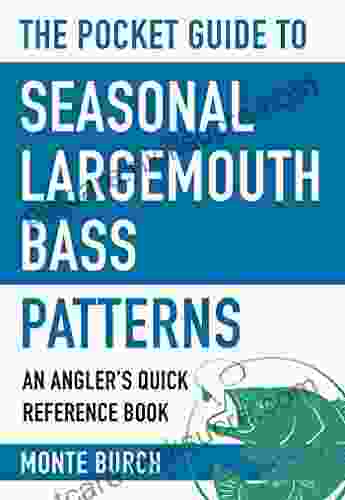
 Marcus Bell
Marcus BellThe Essential Guide to Angler Quick Reference: Your...
Embark on an unforgettable...
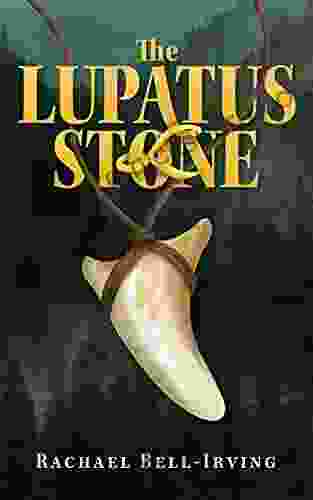
 Juan Butler
Juan ButlerThe Lupatus Stone: A Wicked Conjuring
The Lupatus Stone is a...

 Alvin Bell
Alvin BellUnveiling the Enchanting Memoirs of Lady Hyegyong: A...
In the annals of Korean...

 DeShawn Powell
DeShawn PowellAMC's Best Day Hikes in the Berkshires: Explore Majestic...
The Berkshires, a...
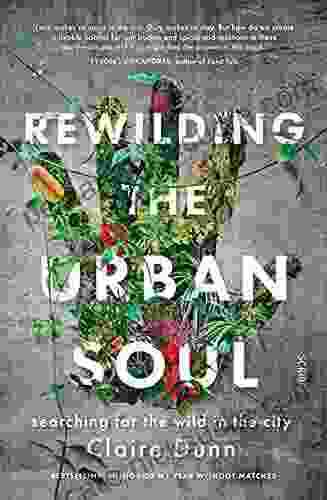
 Clark Campbell
Clark CampbellRewilding The Urban Soul: Reconnecting with Nature in the...
In the heart of sprawling metropolises, where...
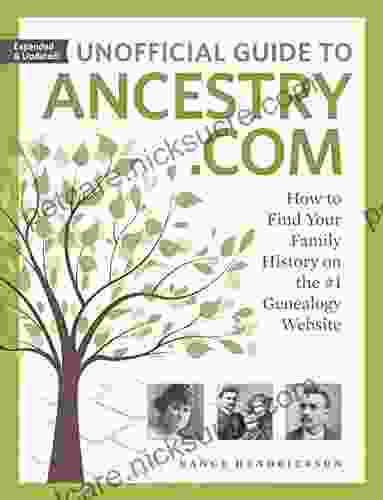
 Cruz Simmons
Cruz SimmonsHow to Find Your Family History on a Genealogy Website: A...
Delving into the...
4 out of 5
| Language | : | English |
| File size | : | 10625 KB |
| Text-to-Speech | : | Enabled |
| Screen Reader | : | Supported |
| Enhanced typesetting | : | Enabled |
| Word Wise | : | Enabled |
| Print length | : | 396 pages |



